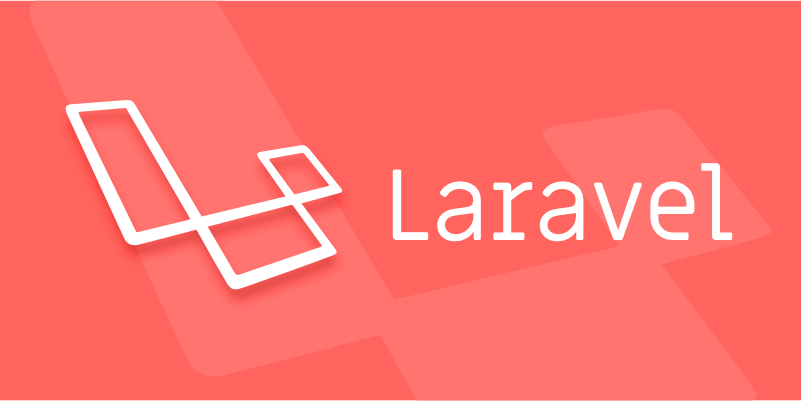Laravel Telescope is a debugging and monitoring tool designed for Laravel application development. 1. It centrally displays detailed information such as requests, database queries, exceptions, logs, emails, notifications, cache operations and scheduled tasks through a simple web interface; 2. Developers can install and execute php artisan telescope:install and php artisan migrate through composer require laravel/telescope for configuration; 3. After installation, it can access/telescope paths in the local environment, and supports real-time tracking of request headers, input data, session content, response status, database query execution time and binding parameters; 4. It can automatically record exceptions and logs, preview email and notification content, monitor cache operations and scheduled tasks execution status; 5. Through centralized observation, it helps developers quickly locate 500 errors and discover N 1 Query problems and verify queue task load and email construction accuracy, thereby significantly improving debugging efficiency and enhancing application development confidence.

Laravel Telescope is a powerful debugging and monitoring tool designed specifically for Laravel applications during development. It gives developers deep insight into what's happening under the hood of their app by collecting and displaying detailed information about requests, database queries, exceptions, log entries, scheduled tasks, mail, notifications, cache operations, and more—all through a clean, user-friendly web interface.

Think of Telescope as a developer's dashboard: instead of scattering dd() or Log::info() calls everywhere, you can use Telescope to centrally inspect and analyze your application's behavior in real time.
Key Features of Laravel Telescope
- Request Inspection : See every HTTP request made to your app, including headers, input data, session content, and response status.
- Query Monitor : View all executed database queries, including their execution time, bindings, and which routes triggered them—helpful for spotting slow or duplicated queries.
- Exception & Log Tracking : Automatically logs all exceptions and
Logcalls, making it easier to catch and debug errors. - Mail & Notification Preview : Preview emails and notifications without sending them, and inspect their content and variables.
- Cache Monitoring : Track cache gets, sets, hits, and misses to debug caching issues.
- Scheduled Task Logging : See when scheduled jobs (
schedule:run) were executed and their output. - Jobs & Events : Monitor dispatched jobs and fired events to understand workflow execution.
How to Use It
Telescope is simple to install:

composer requires laravel/telescope
Then publish and run the migrations:
php artisan telescope:install php artisan migrate
After installation, access Telescope at /telescope in your app (only available in local or development environments by default for security).

Why It's Useful for Debugging
Instead of guessing where something went wrong, Telescope lets you:
- Trace a 500 error back to the exact request and exception.
- Spot N 1 query problems by reviewing slow queries tied to a specific route.
- Verify that a queued job was dispatched with the right payload.
- Confirm that an email was built correctly before sending.
It doesn't replace logging or traditional debugging entirely, but it dramatically reduces debugging time by centralizing visibility.
Basically, Laravel Telescope turns your dev environment into a live observation station—making it easier to build, test, and refine your app with confidence.
The above is the detailed content of What is Laravel Telescope for debugging?. For more information, please follow other related articles on the PHP Chinese website!

Hot AI Tools

Undress AI Tool
Undress images for free

Undresser.AI Undress
AI-powered app for creating realistic nude photos

AI Clothes Remover
Online AI tool for removing clothes from photos.

Clothoff.io
AI clothes remover

Video Face Swap
Swap faces in any video effortlessly with our completely free AI face swap tool!

Hot Article

Hot Tools

Notepad++7.3.1
Easy-to-use and free code editor

SublimeText3 Chinese version
Chinese version, very easy to use

Zend Studio 13.0.1
Powerful PHP integrated development environment

Dreamweaver CS6
Visual web development tools

SublimeText3 Mac version
God-level code editing software (SublimeText3)

Hot Topics
 Creating Custom Validation Rules in a Laravel Project
Jul 04, 2025 am 01:03 AM
Creating Custom Validation Rules in a Laravel Project
Jul 04, 2025 am 01:03 AM
There are three ways to add custom validation rules in Laravel: using closures, Rule classes, and form requests. 1. Use closures to be suitable for lightweight verification, such as preventing the user name "admin"; 2. Create Rule classes (such as ValidUsernameRule) to make complex logic clearer and maintainable; 3. Integrate multiple rules in form requests and centrally manage verification logic. At the same time, you can set prompts through custom messages methods or incoming error message arrays to improve flexibility and maintainability.
 Adding multilingual support to a Laravel application
Jul 03, 2025 am 01:17 AM
Adding multilingual support to a Laravel application
Jul 03, 2025 am 01:17 AM
The core methods for Laravel applications to implement multilingual support include: setting language files, dynamic language switching, translation URL routing, and managing translation keys in Blade templates. First, organize the strings of each language in the corresponding folders (such as en, es, fr) in the /resources/lang directory, and define the translation content by returning the associative array; 2. Translate the key value through the \_\_() helper function call, and use App::setLocale() to combine session or routing parameters to realize language switching; 3. For translation URLs, paths can be defined for different languages ??through prefixed routing groups, or route alias in language files dynamically mapped; 4. Keep the translation keys concise and
 Working with pivot tables in Laravel Many-to-Many relationships
Jul 07, 2025 am 01:06 AM
Working with pivot tables in Laravel Many-to-Many relationships
Jul 07, 2025 am 01:06 AM
ToworkeffectivelywithpivottablesinLaravel,firstaccesspivotdatausingwithPivot()orwithTimestamps(),thenupdateentrieswithupdateExistingPivot(),managerelationshipsviadetach()andsync(),andusecustompivotmodelswhenneeded.1.UsewithPivot()toincludespecificcol
 Sending different types of notifications with Laravel
Jul 06, 2025 am 12:52 AM
Sending different types of notifications with Laravel
Jul 06, 2025 am 12:52 AM
Laravelprovidesacleanandflexiblewaytosendnotificationsviamultiplechannelslikeemail,SMS,in-appalerts,andpushnotifications.Youdefinenotificationchannelsinthevia()methodofanotificationclass,andimplementspecificmethodsliketoMail(),toDatabase(),ortoVonage
 Understanding and creating custom Service Providers in Laravel
Jul 03, 2025 am 01:35 AM
Understanding and creating custom Service Providers in Laravel
Jul 03, 2025 am 01:35 AM
ServiceProvider is the core mechanism used in the Laravel framework for registering services and initializing logic. You can create a custom ServiceProvider through the Artisan command; 1. The register method is used to bind services, register singletons, set aliases, etc., and other services that have not yet been loaded cannot be called; 2. The boot method runs after all services are registered and is used to register event listeners, view synthesizers, middleware and other logic that depends on other services; common uses include binding interfaces and implementations, registering Facades, loading configurations, registering command-line instructions and view components; it is recommended to centralize relevant bindings to a ServiceProvider to manage, and pay attention to registration
 Understanding Dependency Injection in Laravel?
Jul 05, 2025 am 02:01 AM
Understanding Dependency Injection in Laravel?
Jul 05, 2025 am 02:01 AM
Dependency injection automatically handles class dependencies through service containers in Laravel without manual new objects. Its core is constructor injection and method injection, such as automatically passing in the Request instance in the controller. Laravel parses dependencies through type prompts and recursively creates the required objects. The binding interface and implementation can be used by the service provider to use the bind method, or singleton to bind a singleton. When using it, you need to ensure type prompts, avoid constructor complications, use context bindings with caution, and understand automatic parsing rules. Mastering these can improve code flexibility and maintenance.
 Strategies for optimizing Laravel application performance
Jul 09, 2025 am 03:00 AM
Strategies for optimizing Laravel application performance
Jul 09, 2025 am 03:00 AM
Laravel performance optimization can improve application efficiency through four core directions. 1. Use the cache mechanism to reduce duplicate queries, store infrequently changing data through Cache::remember() and other methods to reduce database access frequency; 2. Optimize database from the model to query statements, avoid N 1 queries, specifying field queries, adding indexes, paging processing and reading and writing separation, and reduce bottlenecks; 3. Use time-consuming operations such as email sending and file exporting to queue asynchronous processing, use Supervisor to manage workers and set up retry mechanisms; 4. Use middleware and service providers reasonably to avoid complex logic and unnecessary initialization code, and delay loading of services to improve startup efficiency.
 Handling exceptions and logging errors in a Laravel application
Jul 02, 2025 pm 03:24 PM
Handling exceptions and logging errors in a Laravel application
Jul 02, 2025 pm 03:24 PM
The core methods for handling exceptions and recording errors in Laravel applications include: 1. Use the App\Exceptions\Handler class to centrally manage unhandled exceptions, and record or notify exception information through the report() method, such as sending Slack notifications; 2. Use Monolog to configure the log system, set the log level and output method in config/logging.php, and enable error and above level logs in production environment. At the same time, detailed exception information can be manually recorded in report() in combination with the context; 3. Customize the render() method to return a unified JSON format error response, improving the collaboration efficiency of the front and back end of the API. These steps are






